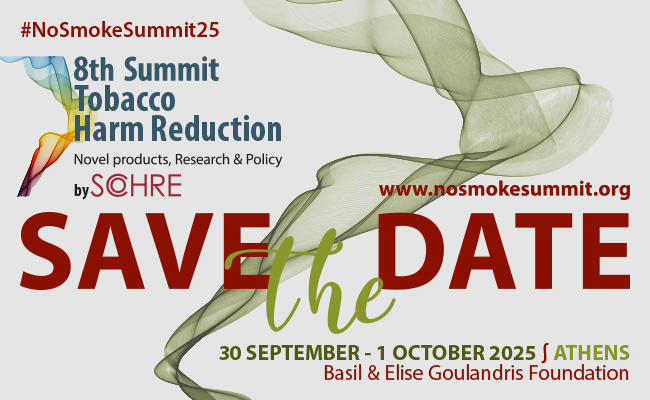Solomon Rataemane, a renown psychiatrist from South Africa, delivered a presentation on the principles and techniques of Cognitive Behavioural Therapy (CBT) as a method for smoking cessation, highlighting the relationship between thoughts, emotions, and behaviours, and the necessity of recognizing and challenging smoking-related cognitive patterns. He outlined several CBT techniques that therapists use to assist individuals in identifying and challenging smoking-related thoughts and behaviours; namely, cognitive restructuring, self-monitoring, stimulus control, relaxation methods, problem-solving, and the role of social support in the process. Fares Mili, summarizing the key points, stressed the importance of enhancing motivation, addressing triggers and cravings, and equipping therapists with improved strategies to support their clients in quitting smoking.
In a short introduction, Fares Mili, this session’s chair, described the two major dependencies involved in smoking-the reasons for smoking- the first is the pharmacologic dependency where psychoactive substances play a large role. Here, pharmacotherapy is very efficient. The second is the psychoactive behaviour dependency, where counselling is most efficient. It is known that in smoking cessation, the best results are obtained by combining the two methods.
Dr Rataemane said that he will indicate how CBT for smoking cessation happens in practice, and then reminded the definition of smoking cessation, which is the process of quitting and remaining abstinent from tobacco products. He underlined that this refers to all ranges of tobacco products-not only combustible cigarette- but also alternative methods like vaping or a combination. This means that a therapist needs to structure the intervention in such a way that it addresses the needs of the particular client or individual.
Support and Coping Skills in Smoking Cessation
Smoking cessation requires commitment, support, and strategies to overcome nicotine addiction and smoking habits, he explained. This implies that the key element that people seek in smoking is the nicotine contained in tobacco. Unfortunately, in combustible cigarettes, this is accompanied by a number of toxic substances. But around the smoking itself, people tend to develop certain behaviours, for example, people know that when they are eating or drinking, they’ll smoke; or when they are with friends, they’ll smoke. These are some of the cognitive behaviour therapy targets.
CBT principles in smoking cessation include helping the individual identify and challenge smoking-related thoughts and behaviours. This implies understanding the interconnectedness between thoughts, emotions and actions. A smoker who starts CBT to quit, needs to become aware of the triggers and coping mechanisms, Dr Rataemane said. In other words, if you have noticed that a situation might trigger smoking, you can plan in advance to develop a coping mechanism. Learning new skills to manage cravings and emotions—which help to deal with the triggers—or developing a relapse prevention plan with the therapist, are elements of CBT that are very helpful to smokers.
Techniques of CBT in Smoking Cessation
The speaker then referred to CBT techniques for smoking cessation, such as cognitive restructuring, that is, identifying and challenging negative thoughts about quitting (e.g., I will never be able to quit.) The therapist’s task here, the speaker said, is to enable the individual to understand that this statement is too strong and that they could look at things differently. Most people don’t understand that those actions are related to their thoughts. Smokers might have a fear of impending failure, that they may not succeed with what they’re doing at a given time if they don’t smoke and they don’t feel better.
Another technique is self-monitoring. Individuals who wish to quit smoking are encouraged to keep a smoking diary to track patterns and triggers. Then, the entries to the diary are used in CBT sessions, to go through them with the therapist and identify what may have gone wrong at a particular point, look at an alternative that would have helped them reduce or avoid smoking even without using medication and so on.
Stimulus control is a technique where the individual is asked to remove cues related to smoking, such as ashtrays and lighters; only by seeing them, the person wants to smoke, as the behaviour is already embedded in their thoughts, and happens almost compulsively. The therapist also helps the individual with relaxation techniques. Deep breathing, for instance, instead of running out of the plane and go out to an area where smoking is allowed, or some progressive muscle relaxation. Even, sitting quietly to do some mindfulness meditation.
Another technique is problem solving, that is identify and plan for challenging situations. The speaker shared an example: a person trying to quit and is invited to meet friends who are drinking, may wish to join, but then the friends are also smoking, and the smoker may be tempted. The therapist encourages people to understand a challenging situation and have to plan ahead to resist smoking.
Dr Rataemane concluded with an important technique, social support, meaning to encourage support from family, friends, or support groups. Some people listen well to their family or friends, but other people function better when they are in support groups, because there, people find out that they are not the only one struggling.



